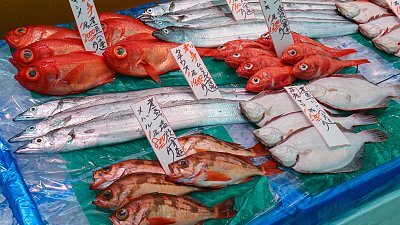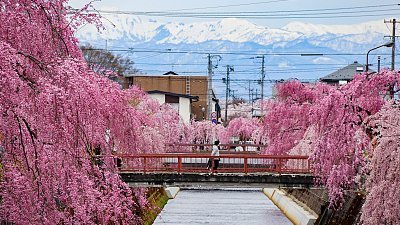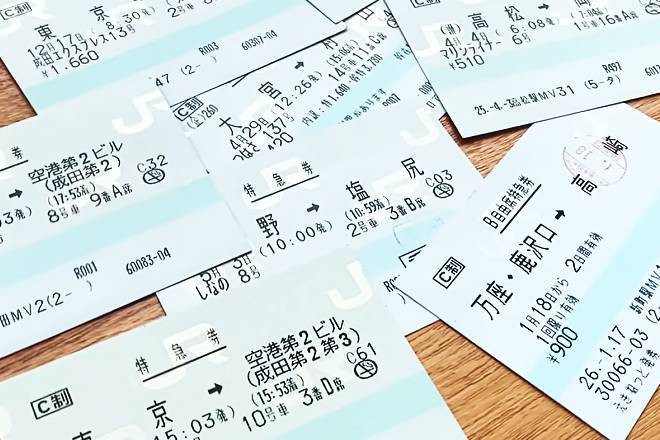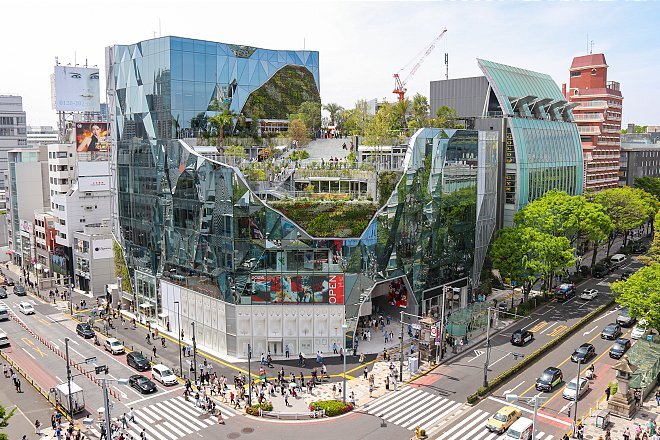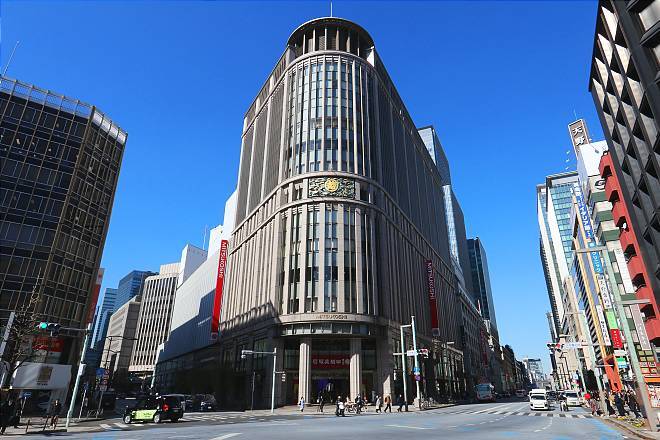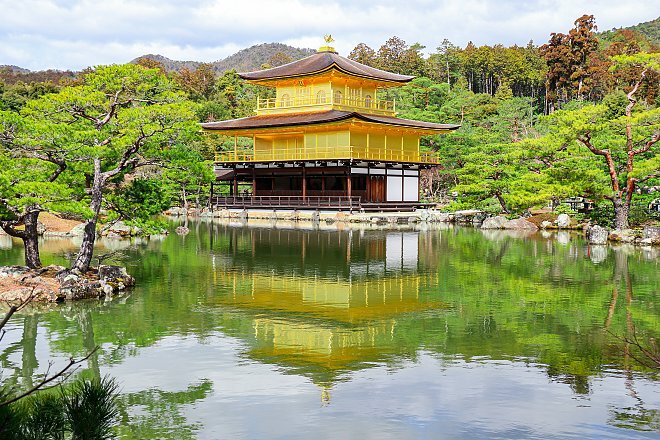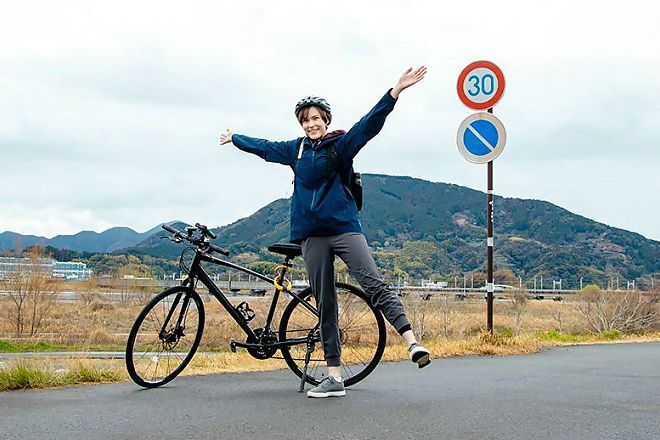Travel outdoors in Nagano

Nagano Prefecture is one of Japan's eight inland prefectures whose land mass does not meet the sea or ocean; about 80 percent of the prefecture is covered by mountains. In fact, the prefecture has 29 out of the top 100 famous mountains in Japan, and there are 15 mountains with peaks that are over 3000 meters high. Consequently, Nagano is famous for outdoor activities like hiking and snow activities thanks to high snowfall in the mountainous regions. Places like Hakuba and the Snow Monkeys in Yamanouchi are also well known internationally.
Closer down to earth, cities like Nagano and Matsumoto offer different charms. The former is home to Zenkoji Temple which is an important Buddhist temple in the country, and the latter is a castle town and has Matsumoto Castle, an original castle that has remained and been preserved since it was constructed.
For this early summer Solo Female Travel report, I headed to Nagano Prefecture on an overnight trip. I knew that I wanted to do some hiking as the prefecture is pretty much one huge hiking wonderland with all those mountains as well as visit some cultural sights in the cities. My two-day itinerary started in Nagano city where I visited Zenkoji Temple, then headed to Togakushi Shrine about an hour away at the base of the Togakushi mountain range. On the second day, the first half was spent in Kamikochi, and the second half in Matsumoto.
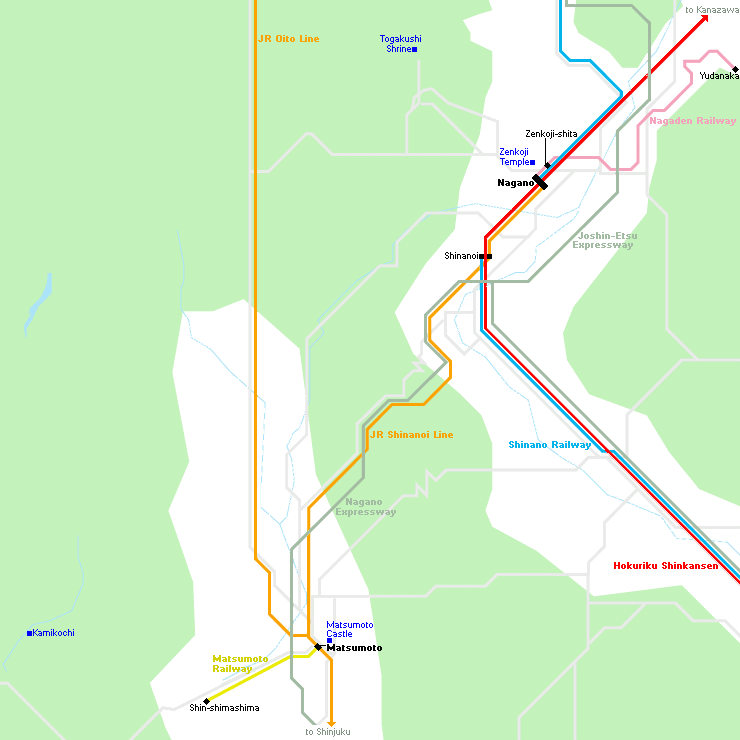
Day 1
I took a short walk from Zenkoji-shita Station on the Nagaden Railway to Zenkoji Temple. It was nice to start the day walking through the temple grounds before the large tour groups arrived. The temple has an hour-long morning prayer service that all early birds can participate in, but unfortunately, my train into Nagano arrived too late for that. Nevertheless, there're still lots of things to see and do at Zenkoji.


I bought a combination ticket for 1000 yen which allowed me entry into the inner sanctuary and underground passage at the main hall, the Sanmon gate, the Kyozo Sutra hall and the history museum. Entering these paid places gave me a deeper appreciation of Zenkoji Temple than just walking around and looking at the things from the outside.


The massive main hall (hondo) at Zenkoji is a national treasure and has remained as it was since its reconstruction in 1707. One of the things that stood out to me as I stood inside the inner sanctuary of the hondo was the slightly faded, but prominent statues of bodhisattvas holding musical instruments that instantly reminded me of the ones at Byodoin Temple in Uji.
To the right side of the main hall, there were a flight of steps going down into the darkness. This step into absolute darkness leads directly under the main statues of worship, and along the way there is a lock which symbolises the doorway to paradise and connects those who find it with the enshrined Buddha.

Tour groups had started streaming in by the time I was done at Zenkoji Temple, and that was my cue to move out and catch the bus to Togakushi Shrine. My bus stop was not far from Zenkoji, and I managed a quick look at some of the nearby stores before the bus arrived. The bus ride from Zenkoji to Togakushi took about an hour, and I watched as the scenery outside went from town to countryside to mountainous.





Visiting Togakushi Shrine which consists of five shrines was my primary focus for the day, and I was excited to see what was in store for me. The shrines are spread around the base of Mount Togakushi in the Myoko Togakushi Renzan National Park, and the Togakushi mountain range has been considered as a spiritual place for mountain worshipers (shugendo) since the 14th century. My plan was to start at the topmost shrine and follow the old walking route down to the bottom shrine. All in all, this route led through mostly forest paths to all five shrines and took me about four hours.


I set off to an amazing start at Okusha, the topmost shrine. The two kilometer approach to the Okusha from the bus stop was lined with tall, imposing cedar trees, and I felt dwarfed and tiny in the whole grand scheme of things. The walk to the shrine takes a while and takes an uphill turn in the last 500 meters or so.
Just when I was starting to think that it was taking forever to get to the Okusha, I spied the final flight of stairs to the shrine building. It was definitely a welcome sight, and I took some time to rest and check out the simple shrine buildings. A hiking trail continues from the shrine office into the Togakushi mountain range, but I decided that it was not for today.






Back at the start to the approach, I had a quick lunch of oyaki which is a local cuisine of grilled, steamed buns that contain a variety of fillings. These homemade buns were originally made with buckwheat or wheat flour to replace the need for rice through the long winters in the mountains, and slowly evolved to be a traditional cuisine of the region. There was nothing better than having oyaki for lunch as (I imagined) many pilgrims to have done before.


My forest-y but well-marked path allowed for some amazing views. I arrived at the Chusha, the middle shrine in no time at all and paid my respects there. This shrine felt a little more built up, unlike the Okusha which was surrounded by tall trees, and did not feel as impressive. After checking out some interesting spots, I headed for the next shrine farther down.







Hokosha was my last stop at Togakushi Shrine, and the main hall here was also the oldest of all the shrines. My favourite thing was seeing all the intricate carvings that feature numerous animals like elephants, phoenixes, kirins and dragons. Last but not least, my route led me down the steep step approach and to the nearby bus stop from where I took the bus back to Nagano city.






Back in the city, I was ravenous and headed to a restaurant for dinner. My choice was Yokomachi Cafe which is a part of a local shichimi pepper store. Dining at the cafe allowed me to taste all the different products available, and that was what I did with my meal. Shichimi contains seven different kinds of spices, and typically added to soups and noodle dishes. This local Nagano brand, Yawataya Isogoro, is one of the three old and established shichimi brands in Japan. The other two are Yagenbori in Asakusa, Tokyo and Shichimiya Honpo in Kiyomizu, Kyoto.





Day 2
My first destination for today was Kamikochi, and I took one of the earliest trains from Nagano to Shin-Shimashima via Matsumoto to catch the local bus which got me there at around 9:30. Kamikochi can be considered to be the gateway to the Northern Japan Alps in the Chubu Sangaku National Park as it is surrounded by numerous tall mountains.


If I considered yesterday to be amazing, today was even amazing-er. Kamikochi has got to be one of the most beautiful places on earth (yes, I said it) when it is open to the public. Hiking options range from easy for beginners all the way to advance for the most hardcore hikers up the mountains. I went for the easy option and did a 4-hour hiking loop which started at Taishoike bus stop to Myojin Bridge along the northern trail and ended at the bus terminal.




The gods bestowed perfect weather when I was there, and it made every turn I took a photo moment. The air was slightly chilly when I arrived, but it soon warmed up as the day passed. My route took me through the woods and along the Azusa River with its crystal clear waters, provided a bit of wildlife spotting and crossed a small shrine. I couldn't have asked for anything more, except perhaps for unlimited stamina and another 15 hours of daylight so that I could scale one of the surrounding peaks and come back down on the same day. But that's just being greedy :P




The walking route was well-kept, and there were also toilets along the way. The crowds thinned out beyond the Kappa Bridge, and the path became slightly quieter which allowed me to listen to the sounds of nature and at how loud my footsteps were. It was really hard to pick a favourite spot, but if I had to pick, it would be one between the Kappa and Myojin bridges where I could sit along the river and enjoy the silence.


I made sure to get my fill of fresh air and the great outdoors before heading to Kamikochi Bus Terminal to catch the bus to Shin-shimashima. Note that reservations have to be made for the return bus, and you may not be allowed on the bus without one especially when it is crowded.





Back in Matsumoto, I thought that it would've been a waste if I went back home without visiting the castle. So, it was off to Matsumoto Castle after that epic first half in Kamikochi. I took the bus from the station, but the castle can also be reached in about 15 minutes on foot.
Needless to say, the castle did not disappoint, and I had the opportunity to enter one of the twelve remaining original castles and a national treasure in Japan. Inside the wooden structure, there were displays of armour and weapons as well as explanations about the castle history and the different parts of castle architecture. Being an original castle, be aware that the stairs are typically steep, narrow and with low beams in some places.



The castle is fairly large and consists of two keeps and two turrets. There were clues in the castle indicating that the different turrets and keeps were not built at the same time, but separately instead. The prettiest of them all had to be the Tsukimi Turret which was built for moon viewing (lit. tsukimi) purposes. The platform has large windows on the all sides except on the west, and a curved roof like a ship's hull to better reflect the moonlight coming through.
Matsumoto Castle is a popular cherry blossom viewing spot in Matsumoto, but unfortunately the sakura season was long over when I was there. However, it was still worth walking around the castle grounds to get different views of the place.


With the castle checked off the list of things to do, I walked back to Matsumoto Station and made my way back home. This epic overnight trip in Nagano Prefecture took me to two incredible places in two different national parks and showed me Mother Nature's excellent taste in creation. I had my initial reservations, thinking that this trip would be too tight and tiring, and I was glad to be proved wrong. This is an itinerary worth keeping, and one that I can see myself doing again and extending to include other spots I missed on this trip.



Getting There and Around
Nagano and Togakushi
Nagano Station is a stop on the Hokuriku Shinkansen, and the one way journey from Tokyo takes about 100 minutes and costs around 8000 yen. Zenkoji Temple is about a 30-minute walk from Nagano Station, or a 10-minute walk from Zenkojishita Station on the Nagaden Railway (5 minutes, 170 yen one way from Nagano Station).
Alpico Kotsu operates hourly buses between Nagano Station or Zenkoji Temple (善光寺大門, Zenkoji Daimon) and Togakushi Highland. The one way journey to the topmost shrine, Togakushi Okusha (戸隠奥社) takes about an hour and costs 1350 yen.
Nagano and Matsumoto
Take the JR Shinanoi Line from Nagano Station to Matsumoto Station. The direct train takes about 80 minutes and costs 1140 yen one way. Limited express Wide View Shinano trains shorten the travel time to about 50 minutes and cost around 2500 yen one way.
Matsumoto and Kamikochi
Take the Matsumoto Railway from Matsumoto to Shin-shimashima Station (30 minutes), followed by a bus ride to Kamikochi (60 minutes). The one way journey between Matsumoto and Kamikochi costs 2450 yen, and a return ticket that is valid for seven days is available for 4550 yen.
Matsumoto Castle can be reached in about a 15-minute walk from Matsumoto Station. Alternatively, take the Town Sneaker Bus (north course) from Matsumoto Station and get off at Matsumoto Castle (松本城, Matsumotojo). The one way bus ride takes about 8 minutes and costs 200 yen.


